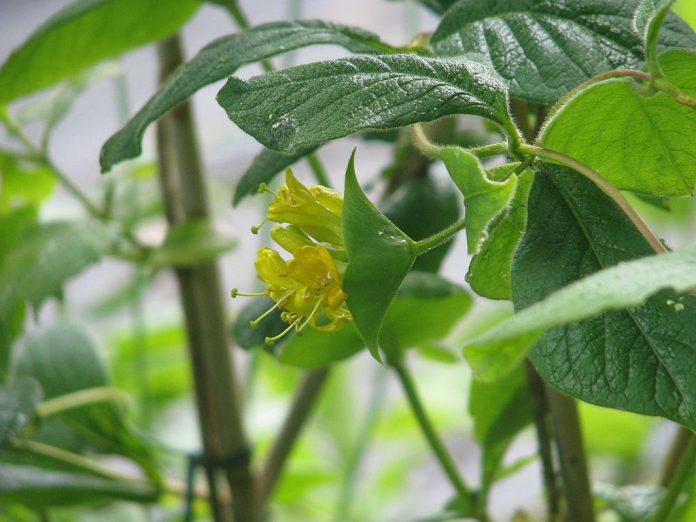
Featured Photo by Peganum / CC BY-SA 2.0
A field guide on how to identify and propagate hairy honeysuckle, a hardy shrub that is native to the boreal forest.
How to Identify Hairy Honeysuckle (Lonicera hirsuta)
Leaves
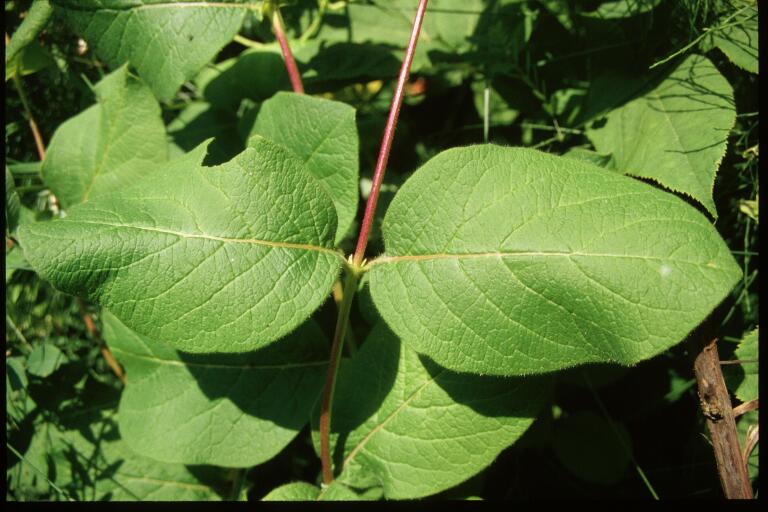
Hairy honeysuckle leaves are ovate-shaped with ciliate margins and grow on the stems in opposite arrangements.
If you look carefully the leaves also have fine hairs on the undersides.
Fruit
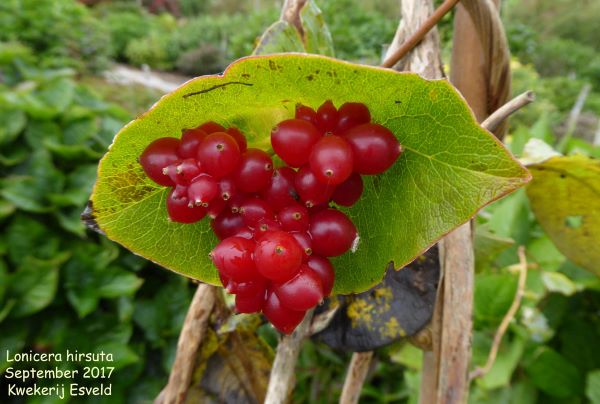
Hairy lonicera produces clusters of bright red berries, approximately 6-8 mm in diameter each.
You can spot them on the plants from late summer to early fall.
They should not be consumed, as most lonicera fruits are poisonous to some extent.
Flowers
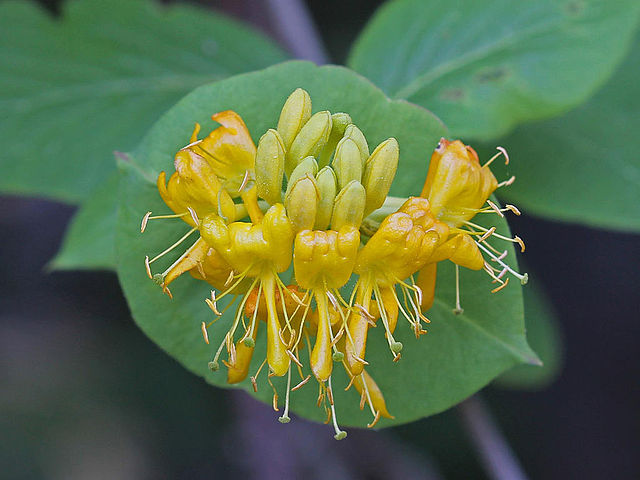
The flowers of hairy honeysuckle are yellow, trumpet-shaped, and occur in clusters at end of branches.
They are about 1/2 to 1 inch long and have two lips, with the upper lip broad and the lower lip narrow and shorter than the tube.
Flowering Season
Hairy honeysuckle blooms in late spring to early summer.
Habitat
Hairy honeysuckle is found in a variety of habitats, including forests, wetlands, and open areas. It is often found in association with other understory plants such as
Some other understory plants that associate with hairy honeysuckle are:
- Canada mayflower (Maianthemum canadense)
- Wild sarsaparilla (Aralia nudicaulis)
- Red elderberry (Sambucus racemosa)
- American fly honeysuckle (Lonicera canadensis)
Wildlife Value
Hairy honeysuckle (Lonicera hirsuta) is a valuable habitat plant for various wildlife. The shrub provides cover, nesting sites, and food sources for many animals, including:
- Birds: Hairy honeysuckle berries are a favorite food of several bird species, including ruffed grouse, sharp-tailed grouse, spruce grouse, and cedar waxwings. Birds also use dense foliage for nesting and cover.
- Butterflies: The shrub’s flowers are a nectar source for butterflies, including the great spangled fritillary and the eastern tailed-blue.
- Bees: Hairy honeysuckle flowers are also an important nectar source for many bee species, including the bumblebee.
How to Propagate Hairy Honeysuckle (Lonicera hirsuta)

Hardiness Zone: 2-6

Soil Type: Clay, loam, sand.

Water: Normal

Exposure: Full Sun to Partial Shade.
You can propagate hairy honeysuckle with two effective methods:
- Stem Cuttings: Propagating hairy honeysuckle from stem cuttings is trickier than using seeds but provides established trees faster.
- By Seed: Propagating hairy honeysuckle from seed is simple and has a high success rate.
How to Propagate Hairy Honeysuckle (Lonicera hirsuta) by Seed
If you identified some wild plants, you can wait for the right time to harvest the seeds and sow them yourself.
Alternatively, you might be able to find them online but they are hard to find.
How to Harvest Seeds
Timing: To harvest seeds, wait until the fruit is fully ripe in the late summer to early fall. The longer you wait for the fruit to ferment, the better your odds of germinating.

Extraction: Mash the fruits through a screen and rinse until you separate the pulp from the seed.
Preparation: Dry the seeds on a screen for a few weeks, in a cool, well-ventilated place.
Stratification: Hairy honeysuckle needs a period of cold stratification to break its dormancy. Store them in a ziplock with moistened sand, refrigerate for 60 days, remove and soak in water for 24 hours, then place back into the refrigerator for another 30 days.
Sowing: Sow the seeds in a seed tray or individual pots, at a depth of 1/16 inch of soil. Cover lightly with soil and water regularly.
Germination: Seeds can take several weeks to germinate. Keep them in a warm, bright spot and cover them with plastic to maintain moisture.
How to Propagate Hairy Honeysuckle (Lonicera hirsuta) by Cuttings
Another great option is to propagate hairy honeysuckle by taking semi-hardwood cuttings.
Timing: The best time to take lonicera cuttings is during spring to early summer. You want to harvest cuttings at least 6 weeks after the first leaves of spring have emerged.

Another important tip is to take them during the early morning or late evening when the plant is the most hydrated.
Harvest the Cuttings
Source: Choose a healthy, young honeysuckle plant to take cuttings from, at least older than 2 years but not from an old bush.
Cutting length: Cut a 6- to 8-inch stem from the plant. Try to get at least two nodes per stem, and remove the leaves from the bottom node.
Root the Cuttings
Soil: Coarse sand or peat with perlite mix. For this stage, you want a sterile soil mix.
Duration: Allow the cuttings to establish well before transplant, roots will take more than 4 weeks to form.
Transplant: You can transplant this summer if they are strong enough, or wait until the following spring. When you do, use a mix of peat, bark, and perlite.
Fertilize: Wait a month after transplanting to fertilize
Overwinter: Bring them in, or leaves them outsides, as long as they get covered in snow.
Hairy honeysuckle is a species of lonicera, a large family of climbing plants. They all propagate in a similar way, if you want an in-depth guide on how to propagate lonicera, take a look at the parent article:
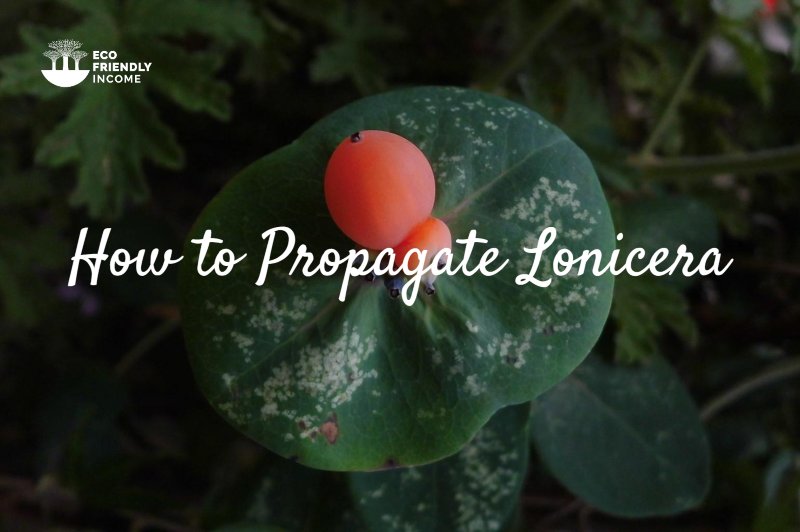
FAQ
A: I have never tried, but since many honeysuckle berries are poisonous, I do not recommend it.
